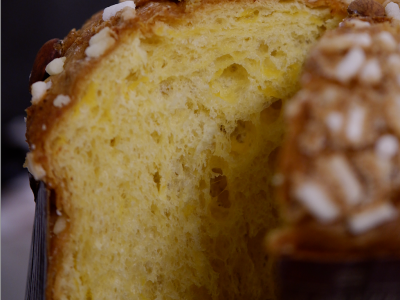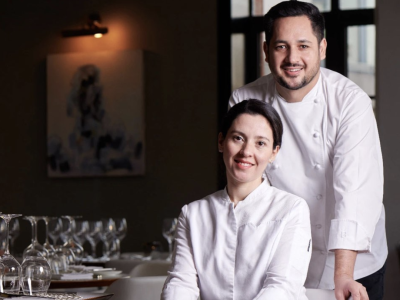When I was living in France, the French cuisine that I adored often came from the hands of Japanese chefs.
I love the essence and layered flavors of French sauces, but I’m equally drawn to the clean, pure qualities of Japanese ingredients. So when these traditions are harmoniously blended, I’m invariably smitten.
Crony in Tokyo, which I recently visited, is a perfect example.A Michelin two-star and Green Star restaurant, Crony combines French and Japanese sensibilities with Nordic inspiration. The restaurant occupies a two-story building tucked down a discreet alley in Azabu-Juban, Tokyo, just steps from a view of Tokyo Tower. With soaring ceilings, massive floor-to-ceiling windows, and a clear Nordic minimalist aesthetic, it’s hard not to pause and admire the elegant glass exterior, even though the signage is subtle.
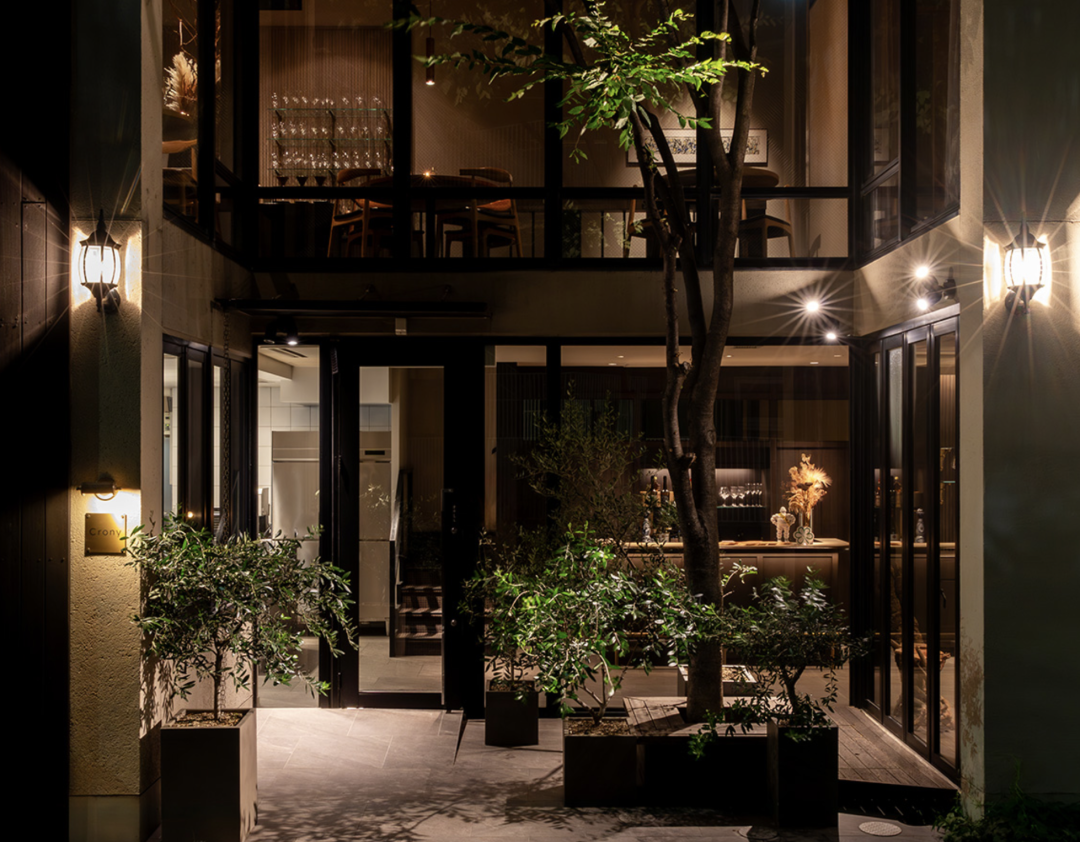 Crony@crony
Crony@crony
The meal begans with a cup of tea—freshly harvested sencha from Nakamura Tokichi, a renowned shop in Uji, Kyoto. Tea picked in early spring (around early May in Uji) is called shincha, prized for its vibrant aroma and minimal bitterness. Next comes a turnip and white squid (shiroika) tartlet that immediately elicits gasps: turnip spheres, each no more than half a centimeter in diameter, meticulously topped with lemon verbena leaves, arranged in neat rows over the squid—looking for all the world like a hydrangea blossom. The craftsmanship is so precise it borders on obsessive perfection. The turnip is crisp, the squid tender and yielding.Another bite features Japanese tiger prawns (Kuruma Ebi), seared just enough for color, presented taco-style with nasturtium leaves, saffron cream, and caramelized onion purée—two seafood morsels, each astoundingly sweet.
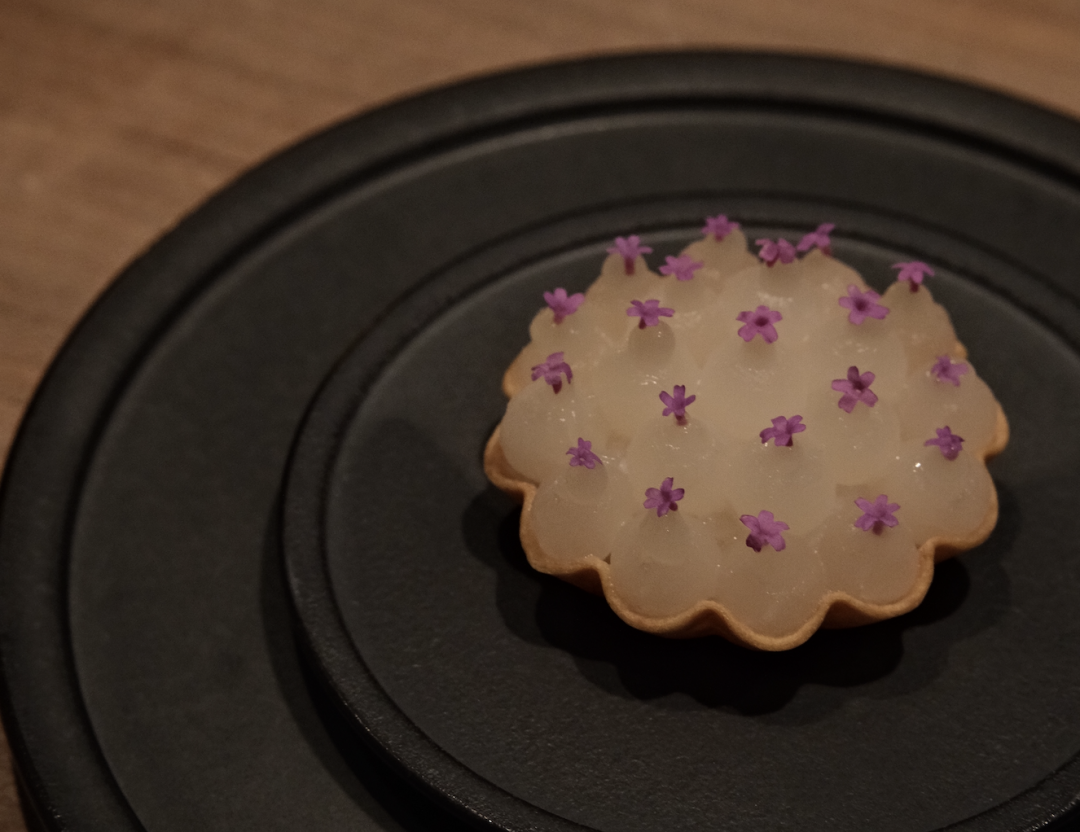 Turnip and White Squid Tartlet
Turnip and White Squid Tartlet
Then is a black truffle pomme soufflé. This reminded me of the cooking competition show “Top Chef” which I often watch, where this classic French dish drives contestants to despair: thin potato slices are first fried at low temperature, cooled, then fried again at a higher temperature so they puff up— if the temperatures and timing are perfectly controlled. Crony’s pomme soufflé is fully puffed, crisp and feather-light, sprinkled with salt to heighten the earthy potato aroma.
The final amuse-bouche, a cream cheese–filled fried dough, is a regular on the menu. The fried dough is pillowy-soft,stuffed with cream cheese made from fresh milk from Fukuoka. The silky-smooth cream cheese melts on the tongue in a wave of lactic tang and buttery richness. As someone who usually is not a fan of fried food, I was impressed. The caviar on top together with the filled fried dough also brought to my mind Disfrutar’s signature Panchino Filled with Caviar in Spain.
 cream cheese–filled fried dough
cream cheese–filled fried dough
After these small bites, my palate was fully awakened. Next came sugar snap peas served with lightly seared clams and a broth slowly simmered from clams and pea pods, lifted by dill oil—delicate and elegant. Another dish paired white eggplant with a Japanese steamed egg (chawanmushi), summer black truffle lending restraint to spotlight the eggplant’s natural sweetness.
Then came the zucchini flower I had been waiting for. I’ve always preferred the flower to zucchini itself for its texture and versatility, though it’s rarer in Asia. Crony stuffed the zucchini flower with Hokkaido sweet shrimp, coated and fried it like a tempura. Slicing it open released a plume of steam; though piping hot, the shrimp’s fragrance made it impossible to wait. The crisp shell locked in the juices, with foamy sauce américaine made with shrimp shells and black garlic paste as sweet as molasses, I was so in love with this “tempura”.
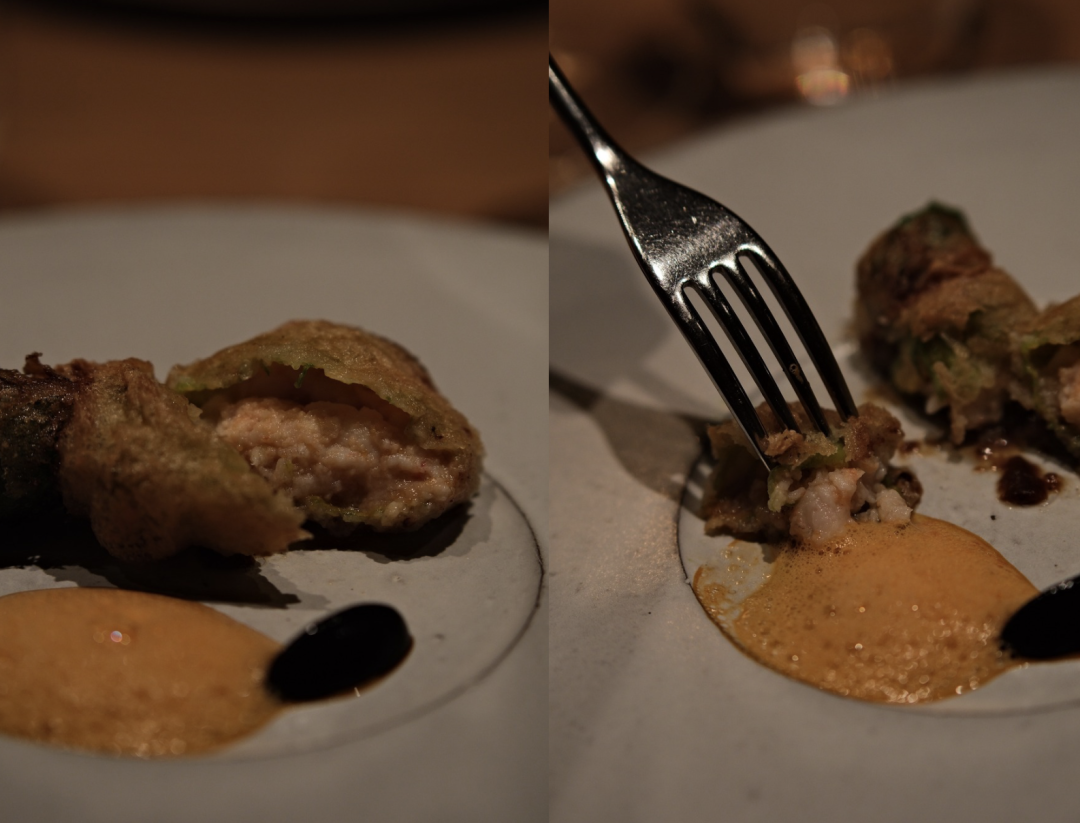 Zucchini Tempura Stuffed With Sweet Shrimp
Zucchini Tempura Stuffed With Sweet Shrimp
Whenever I visit a restaurant, bread is always a big thing for me. While the ingredients are simply flour, yeast, and water, each restaurant’s creativity yields entirely different results. Crony’s bread is leavened with sake lees (sake kasu) yeast, with a thick, caramelized crust and a moist, chewy interior that reveals a delicate, fermented sweetness the longer you chew. The whipped butter blended yogurt and sake kasu, making it airy, bright, and gently tangy. Sommelier Mr. Ozawa paired it with “Goutte D’Argent Chardonnay,” a white wine fermented with Japanese sake yeast. It had pronounced honey and toasty notes, with rounded mouthfeel and a sake-like finish. Its slight acidity also balances the richness from the butter.
I teared the bread, spreading generous amount of butter on top, then took a sip of the wine— these three paired so well together that I was even moved. I could finally understand why the French are so obsessed with bread and butter. Even more intriguing, the wine came from Viña Marty in Chile, produced by a French winemaker with sake yeast from Japan, and its label was designed by the Japanese author of the wine manga Drops of God. I never knew the story behind a bottle of wine could be so multicultural and diverse.
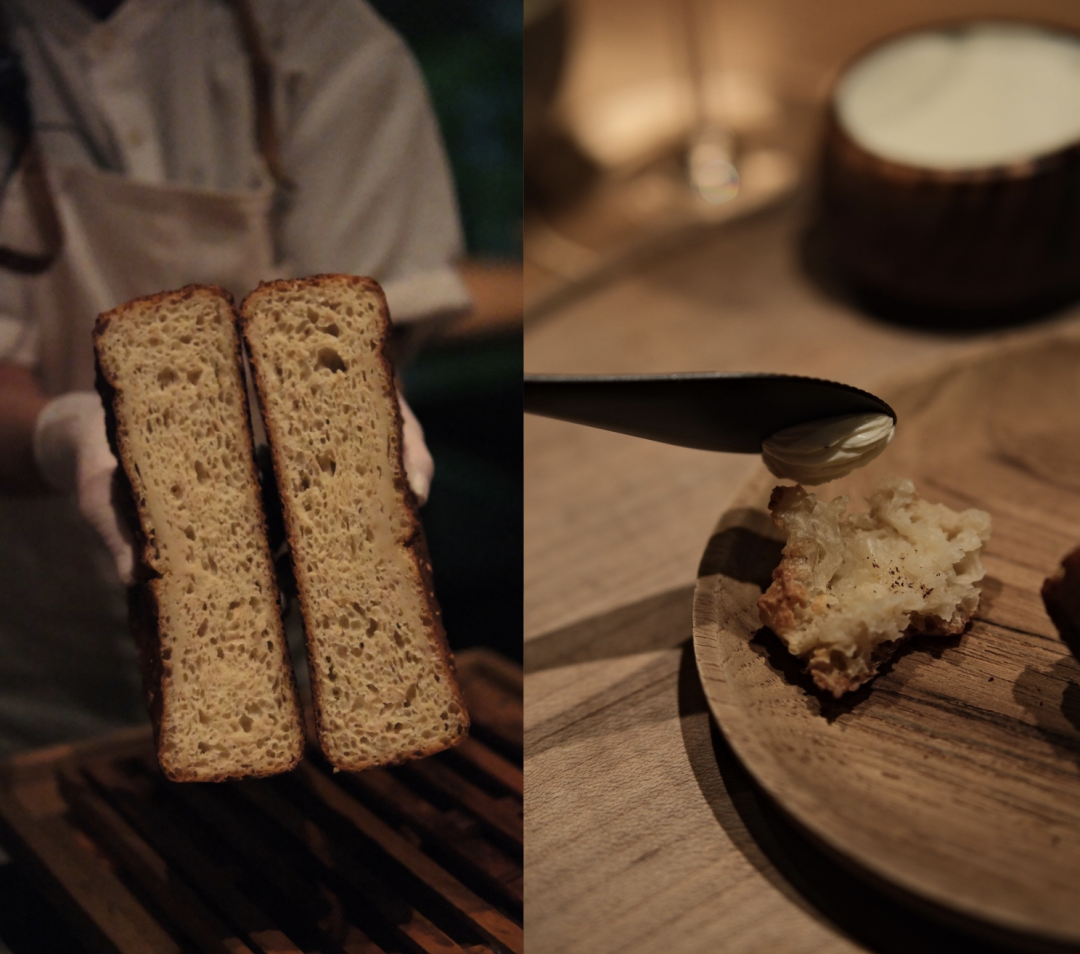
Then the main courses arrived. The isaki grunt fish from was larger and fattier than wild-caught ones this time of year. The skin was seared crackling-crisp while the flesh remained semi-raw, dressed only in salt and a reduction from the fish bones—pure, unadulterated flavor.The venison loin was cooked perfectly pink in the center with a faint char on the edges. Delicious as it was, what won my heart was the humble braised venison belly beside it—bursting with warm, gentle gaminess and a subtle nutty aroma. Paired with caramelized new onions (shin-tamanegi) and a glossy sauce reduced from the meat’s juices, it was sweet, savory, and unforgettable.
 Venison
Venison
I recalled my first visit to Crony last year. It was delicious of course, but this time it’s definitely more impressive. Beyond the meticulous detail, every dish’s flavor felt more distinctive, each ingredient shining unmistakably. I found myself eagerly anticipating dessert.
The first dessert was a fig panna cotta. Figs from Aichi Prefecture brought honeyed herbal aromas and a trace of milkiness, pairing beautifully with the creamy panna cotta. Elderflowers were so precisely arranged they bordered on surreal, and the ripe plum sauce added a refreshing acidity.
“It’s so good—and not too sweet!” someone murmured. We all laughed—“not too sweet” is, after all, the highest praise an Asian can give to dessert. As a huge fan of figs, I couldn't agree more.
 Fig Panna Cotta
Fig Panna Cotta
Remember the first cup of tea? The leftover tea leaves was reused to make an ice cream, then incorporated again into cookie crumbs beneath. Finished with mirin syrup, the tea’s fragrance was subtle yet persistent, while the leaf-shaped sugar shards and tea cookie crumbles added texture—a genuine example of deliciousness and sustainability.
The petits fours were four exquisite little treats. Many restaurants end with mediocre petits fours, but Crony’s finale held its own. The most memorable one was the smoked madeleine: the chef repurposed offcuts from the wooden plates into smoking chips, imparting a unique toasty aroma. Usually, the madeleines are too buttery for me, but here the smoke balanced the richness and left a lingering warmth. I’ve never thought that I would crave madeleines like this.
Another was a chocolate cake (gateau au chocolat) with a remarkable texture. It was light as a cloud and cool to the touch, melting instantly and leaving a bittersweet cocoa and fruity aftertaste. Perhaps naming it as “mousse au chocolat” would do it justice as well.
Before my visit to Crony, I wondered: How would this blend of Japanese, French, and Nordic cuisines manifest?
I’ve always loved trying fusion cuisine, but sometimes it goes wrong—novelty for novelty’s sake. Crony is the opposite: rooted firmly in French technique, showcasing Japanese produce, and taking inspiration from Nordic elements (like the elderflowers of fig panna cotta, were sourced locally in Ishikawa). These days, seasonal local ingredients are common, but when international elements each leave their distinct mark on the plate, it’s something truly rare. As dinner ended, I felt I finally understood what makes Crony so special.
Chef Michihiro Haruta had worked at several three-star restaurants (Ledoyen in Paris, Quintessence in Tokyo, Maaemo in Oslo etc.), crafting food that transcends borders, balancing beauty and flavor. In recent years, Crony has steadily risen: earning its first Michelin star in 2018, promoted to two stars in 2021, awarded with a Green Star in 2023, and debuting at No. 30 on Asia’s 50 Best Restaurants this year. Restaurant manager and Sommelier Kazutaka Ozawa, who had also worked at Quintessence, is one of Japan’s top wine experts and was named Asia’s Best Sommelier of 2025—a title he absolutely deserves (that Goutte D’Argent Chardonnay pairing was unforgettable).
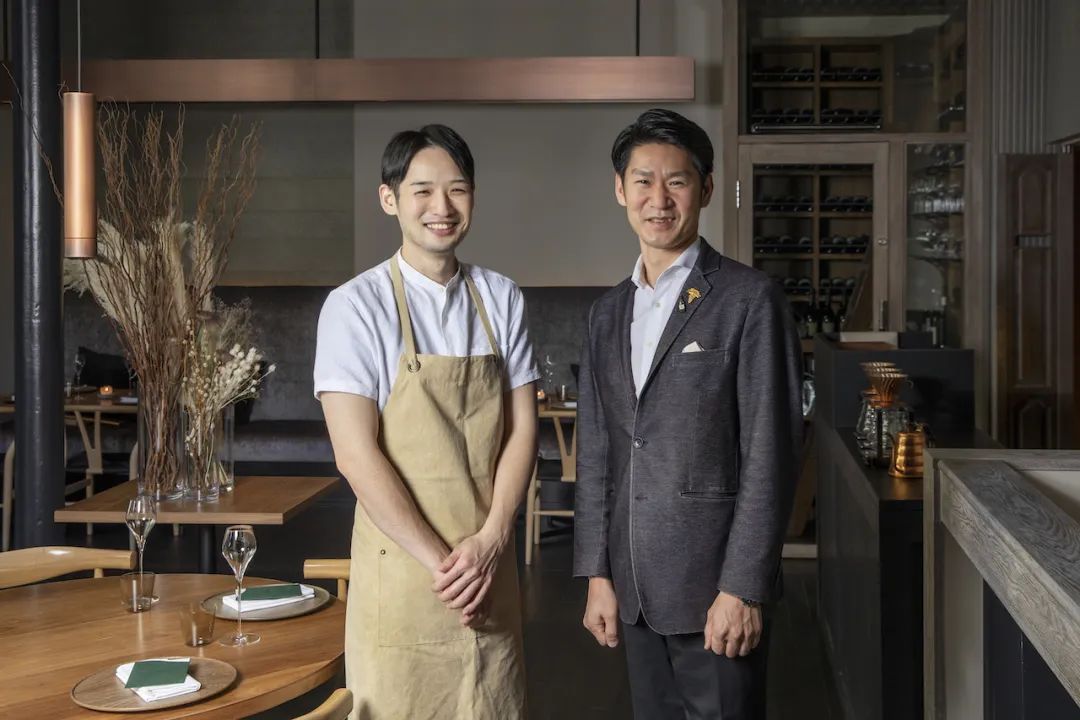 Chef Michihiro Haruta (Left) /Restaurant Manager & Sommelier Kazutaka Ozawa (Right)@byfood
Chef Michihiro Haruta (Left) /Restaurant Manager & Sommelier Kazutaka Ozawa (Right)@byfood
Crony literally means “a lifelong friend”—signifying the deep connections among the team, their suppliers, and the guests. Indeed, the cozy, Scandinavian vibe, as well as thoughtful team and memorable dishes, it felt like dining at a dear friend’s home.
As I stepped out of the restaurant, I glanced back through the tall glass windows. Downstairs, the kitchen was in full swing, while diners upstairs clinked their glasses. For a moment, it felt like a parallel universe.And just as I was still daydreaming about that smoked madeleine, I turned to see Tokyo Tower lighting up the night sky.
I wouldn’t want to end my evening any other way.
Author:Patty Chuang
Images: Patty Chuang/crony/byfood

